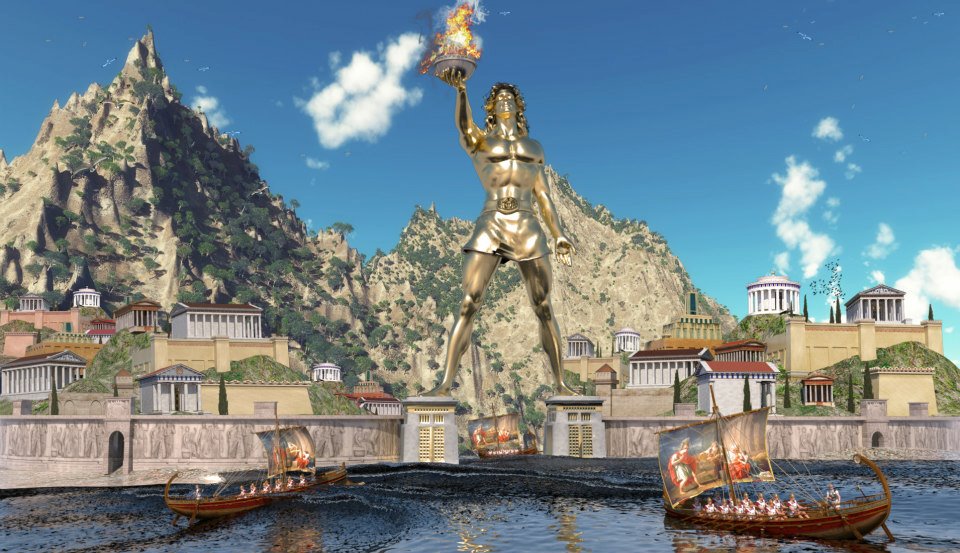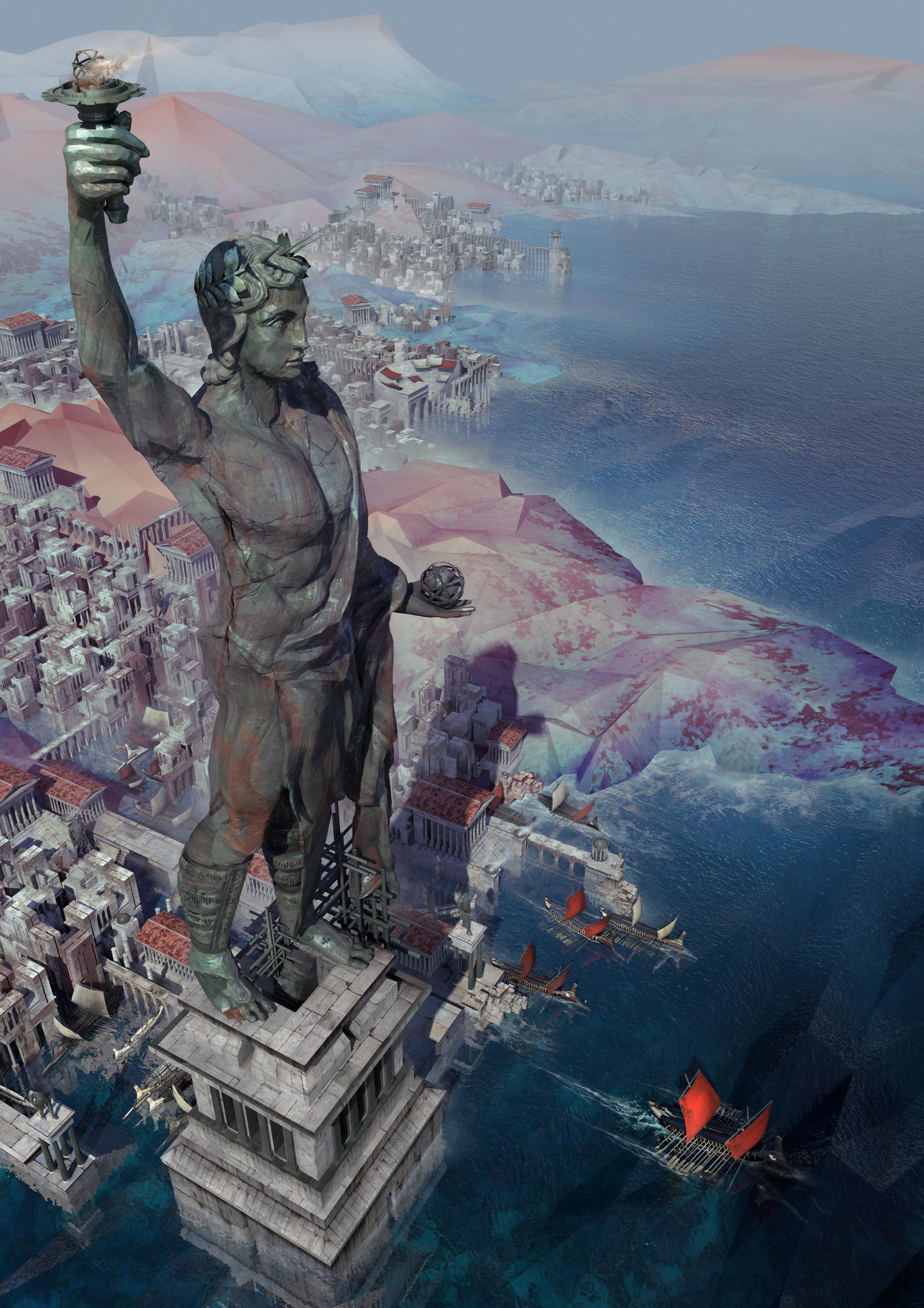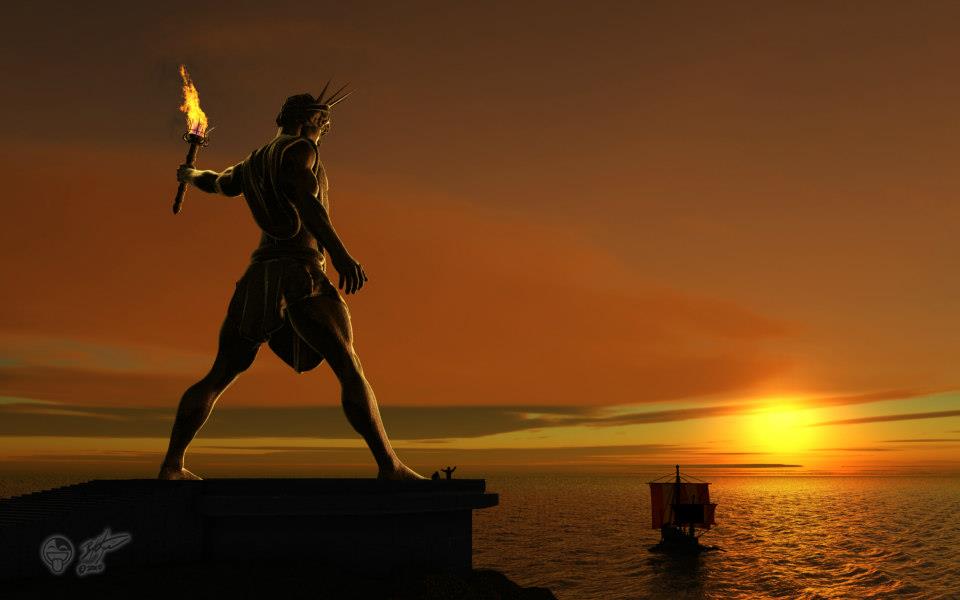The Colossus of Rhodes stood for just 54 years, but its legacy lasted far longer than that.
Like an ancient Lady Liberty, guarding the entrance to the New World, Colossus of Rhodes stood astride the entrance to the island’s Mandraki harbor, watching over those who passed into the city and serving as a symbol of Rhodes’ victory over their foes.
After Antigonus I Monophthalmus, the leader of neighboring island Cyprus, unsuccessfully attempted to besiege Rhodes, the people of Rhodes decided to honor their patron god, Helios. And what better way to honor him, than with a 150-foot tall statue?
Beginning in 292 B.C., Greek sculptor Chares began construction on the Colossus. For twelve years, workers forged and reforged iron and bronze left behind from military weapons to create the outer shell of the statue. As the structure was built, the body would be filled with stones.
As construction took them higher and higher, the workers developed a new method of reaching the heights. Rather than unstable scaffolding, the workers built long earthen ramps, that covered all sides of the Colossus until it resembled a gigantic anthill. Upon completion of the statue, the earth was removed, and the statue stood solitary.
The exact location of the Colossus remains unknown to this day, though ancient accounts place him at different points around Mandraki harbor. All accounts agree, however, that the 108-foot tall statue of Helios stood atop a 49-foot tall white marble pedestal, putting the entire height of the Colossus of Rhodes at an impressive 157-feet tall.
For roughly 54 years, Colossus of Rhodes stood guard over the harbor, and dutifully served as an offering to Helios. Then, in 226 B.C., Rhodes was hit by a devastating earthquake. Large portions of the city were damaged, as well as the harbor, but none was more horrifying than the destruction of the Colossus. Having snapped at the knees, the Colossus fell over onto the land.
For a while, there was talk of rebuilding, but the Oracle of Delphi warned against it. The people of Rhodes had clearly offended Helios, she said, which had caused the statue to fall. She convinced them that rebuilding it could only do more damage.
Though he was in pieces, the Colossus of Rhodes was still as impressive as it had ever been. For 800 years, he lay on the ground, and for 800 years, people traveled from far and wide to come see him. Pliny the Elder wrote that people were stunned at his sheer size, noting that people could barely wrap their arms around his thumb and that his fingers were taller than most statues.
Then, in 693, the Colossus met one whom he didn’t impress. Muslim caliph Muawiyah I stormed Rhodes, capturing the island for his own. According to the Chronicle of Theophanes the Confessor, the statue was melted down and sold to a Jewish merchant, who loaded it onto 900 camels and took it away.
Though he no longer stands mightily over the island, the legacy of Colossus remains. In 2015, tentative plans were drawn up to rebuild the Colossus, and once again grace the Greek skyline with their steadfast guardian.
Colossus of Rhodes PROJECT.
Author: Katie Serena, original article: allthatsinteresting.com











